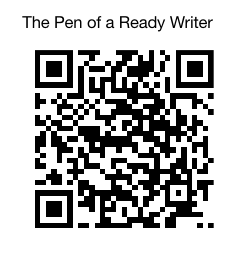The Voice of Kindness Curriculum
Suicide remains a leading cause of death across all age groups. In 2022, more than 49,000 Americans died by suicide, 1.6 million attempted suicide, and 13.2 million reported having serious thoughts about suicide. It is the second leading cause of death among youth ages 10 to 24, and the fourth leading cause among adults ages 35 to 64. Suicide rates are highest among American Indian and Alaska Native populations, males, and individuals living in rural communities. Concerningly, rates of youth suicidality continue to rise, with the most significant increases seen among teen girls, children under 12, and LGBTQ+ youth.
The 2024 National Strategy for Suicide Prevention highlights the urgent need for research on culturally responsive interventions tailored to the unique needs of populations disproportionately affected by suicide and those with comorbid mental health conditions.11 While crisis care plays a critical role in addressing suicide and related mental health challenges, many gaps in evidence-based approaches remain.
One such gap, based on my personal research and chaplaincy experience, is the integration of a biblical approach to kindness within crisis intervention. The Bible offers numerous accounts of individuals experiencing mental anguish, depression, trauma, anxiety, and even suicidal thoughts. Through these stories, God provides profound examples of how to guide someone in crisis toward safety—and ultimately, toward salvation.
As a volunteer chaplain, I’ve witnessed firsthand how sharing the Gospel—the good news—can calm the mind and offer clarity to those in emotional distress. In a world marked by trauma and tragedy, many individuals find their mental health jeopardized. For some, this leads to increased suicide risk. Among the various strategies for crisis prevention, one that consistently proves effective is genuine kindness. A kind response can serve as a bridge to safety, whether that safety comes in the form of Resiliency, Recovery, or Referral, which I call the 3 Romeos.
In teaching the Voice of Kindness curriculum, we adopt a scaffolding approach rooted in scripture. This comprehensive strategy addresses the most extreme stressor—suicide—through learner-based, scenario-driven exercises that can be applied in various settings: the workplace, home, community, church, or within one's own family. The goal is to equip anyone to respond effectively during a crisis, regardless of their background or formal training.
Of course, these interventions face significant barriers. Recognizing and addressing these barriers is essential to overcoming them. As suicide continues to affect more lives, individuals with lived experience are stepping forward, raising awareness, promoting education and training, and most importantly, inspiring hope. Hope is often the most vital transitional solution for those at high risk.
Suicidal ideation does not discriminate. Children, teenagers, and young adults alike are impacted. Yet, the Bible offers wisdom that spans cultural backgrounds, ages, and professions. Within faith-based communities, scripture can serve as a powerful tool to destigmatize suicidal thoughts and mental health challenges. The church—the body of Christ—is called to be a source of hope. As Paul wrote, we are to be “equipping the saints for the work of ministry,” bringing encouragement and light to those feeling hopeless.
Scriptural examples of compassionate care reveal that God's model of kindness can have a powerful ripple effect toward healing. A kind, human response is often the most impactful first step. You may be the one to offer comfort, or you may be the one to connect someone with professional help. In either case, kindness opens the door to hope and healing.
The Voice of Kindness curriculum is a biblically based crisis intervention strategy designed to proactively reduce suicide ideation. By addressing the root causes and providing faith-informed support, we aim to prevent suicides and promote life-giving transformation.
References:
Key substance use and mental health indicators in the United States: results from the 2022 National Survey on Drug Use and Health. Substance Abuse and Mental Health Services Administration (SAMHSA). 2023. Accessed April 9, 2024.
Youth risk behavior surveillance system. Centers for Disease Control and Prevention. Published October 4, 2023. Accessed April 29, 2024. https://www.cdc.gov/healthyyouth/data/yrbs/index.htm
2024 National Strategy for Suicide Prevention. US Department of Health and Human Services. 2024. https://www.hhs.gov/programs/prevention-and-wellness/mental-health-substance-abuse/national-strategy-suicide-prevention/index.html Accessed April 17, 2024.
Donate
Feel free to donate towards future trainings. Just scan the QRC code.

